United States
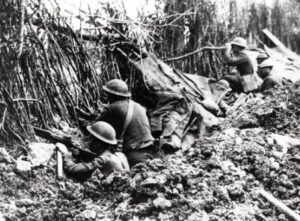
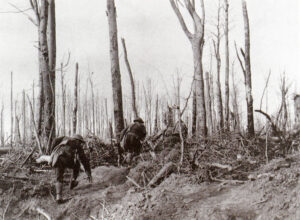 When I think of war and of the largest offensive in United States history, I don’t picture a battle in World War I. Nevertheless, I should. The Meuse–Argonne offensive, which was also called the Meuse River–Argonne Forest offensive, the Battles of the Meuse–Argonne, and the Meuse–Argonne campaign, depending on who you were, was a major part of the final Allied offensive of World War I that stretched along the entire Western Front. The offensive ran for a total of 47 days, from September 26, 1918, until the Armistice of November 11, 1918, and it was the largest in United States military history, past or present.
When I think of war and of the largest offensive in United States history, I don’t picture a battle in World War I. Nevertheless, I should. The Meuse–Argonne offensive, which was also called the Meuse River–Argonne Forest offensive, the Battles of the Meuse–Argonne, and the Meuse–Argonne campaign, depending on who you were, was a major part of the final Allied offensive of World War I that stretched along the entire Western Front. The offensive ran for a total of 47 days, from September 26, 1918, until the Armistice of November 11, 1918, and it was the largest in United States military history, past or present.
The offensive involved 1.2 million American soldiers, and as battles go, it is the second deadliest in American history. During the course of the battle, there were over 350,000 casualties including 28,000 German lives, 26,277 American lives, and an unknown number of French lives. The losses involving the United States were compounded by the inexperience of many of the troops, the tactics used during the early phases of the operation, and in no small way…the widespread onset of the global influenza outbreak called the “Spanish flu.” The 1918 Spanish Flu pandemic, also known as the Great Influenza epidemic, was an exceptionally deadly 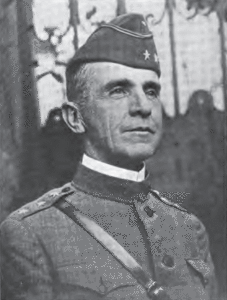
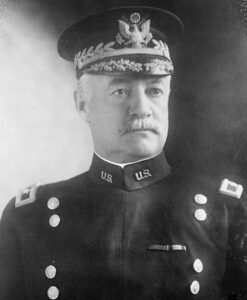 global influenza pandemic caused by the H1N1 influenza A virus. The pandemic affected an estimated 500 million people, or approximately a third of the global population. It is estimated that 17 to 50 million, and possibly as high as 100 million people lost their lives, which probably increased the deaths during the Meuse-Argonne offensive.
global influenza pandemic caused by the H1N1 influenza A virus. The pandemic affected an estimated 500 million people, or approximately a third of the global population. It is estimated that 17 to 50 million, and possibly as high as 100 million people lost their lives, which probably increased the deaths during the Meuse-Argonne offensive.
The Meuse–Argonne was the principal engagement of the American Expeditionary Force (AEF) during World War I, and it was what finally brought the war to an end. It was the largest and bloodiest operation of World War I for the AEF. Nevertheless, by October 31, the Americans had advanced 9.3 miles and had cleared the Argonne Forest. The French advanced 19 miles to the left of the Americans, reaching the Aisne River. The American forces split into two armies at this point. General Liggett led the First Army and advanced to the Carignan-Sedan-Mezieres Railroad. Lieutenant General Robert L Bullard led the Second Army and was directed to move eastward toward Metz. The two United States armies faced portions of 31 German divisions during this phase. The American troops captured German defenses at Buzancy, allowing French troops to cross the Aisne River. There, they rushed forward, capturing Le Chesne, also known as the Battle of Chesne (French: Bataille du Chesne).
In the final days, the French forces conquered the immediate objective, Sedan and its critical railroad hub in a 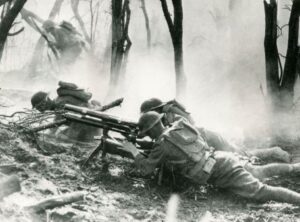
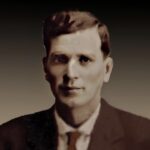
battle known as the Advance to the Meuse (French: Poussée vers la Meuse), and on November 6, American forces captured surrounding hills. On November 11, news of the German armistice put a sudden end to the fighting. That was fortunate for the armies, but for my 1st cousin twice removed, William Henry Davis, it was six days too late. He lost his life on November 5, 1918, on the west bank of the Meuse during these battles. He was just 30 years old at the time.
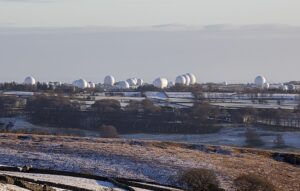 You can fly near it, walk close to some fences, or zoom in from a far hill, but you cannot enter Menwith Hill Royal Air Force Station for any reason. Not unless you are an ECHELON spies and the NSA, that is. The station was founded in 1954, when the British War Office purchased 550 acres and leased them to the United States. The Cold War, a strange war that “raged” from March 12, 1947, to December 26, 1991, was in full swing when Menwith Hill was established. At the time, the station was used for spying and intelligence-gathering. Now that the Cold War is over, no one knows what goes on there. In fact, concern over the goings on is so high that there have been a large number of protests leading to politicians calling for more transparency about what goes on at Menwith Hill Royal Air Force Station. Many people think that Menwith Hill Royal Air Force Station, which is by far the most secretive piece of land in all of the United Kingdom, needs to be more transparent. Nevertheless, to this day, no one knows for sure what goes on in this military installation.
You can fly near it, walk close to some fences, or zoom in from a far hill, but you cannot enter Menwith Hill Royal Air Force Station for any reason. Not unless you are an ECHELON spies and the NSA, that is. The station was founded in 1954, when the British War Office purchased 550 acres and leased them to the United States. The Cold War, a strange war that “raged” from March 12, 1947, to December 26, 1991, was in full swing when Menwith Hill was established. At the time, the station was used for spying and intelligence-gathering. Now that the Cold War is over, no one knows what goes on there. In fact, concern over the goings on is so high that there have been a large number of protests leading to politicians calling for more transparency about what goes on at Menwith Hill Royal Air Force Station. Many people think that Menwith Hill Royal Air Force Station, which is by far the most secretive piece of land in all of the United Kingdom, needs to be more transparent. Nevertheless, to this day, no one knows for sure what goes on in this military installation.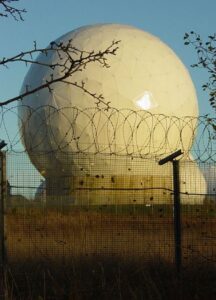
RAF Menwith Hill is owned by the Ministry of Defence (MoD), but made available to the US Department of Defense (DoD) under the NATO Status of Forces Agreement 1951 and other, undisclosed agreements between the US and British governments. The site acts as a ground station for a number of satellites operated by the US National Reconnaissance Office, on behalf of the NSA, with antennae contained in numerous distinctive white radomes, locally referred to as “the golf balls,” and is alleged to be an element of the ECHELON system. The radomes are really a big part of what gives the installation its air of mystery.
Military installations have existed all over the world for hundreds of years, but not all of them are as secretive as Menwith Hill. It’s likely that we will never be privy to the things that go on there, and that may be a source of contention for years to come. I don’t know how I feel about the secrecy in military installations. In some ways I understand the need, but with secrecy, can come corrupt and dark schemes, as we saw during the Holocaust. Much depends on the integrity of the country, and even more importantly the integrity of the people in charge of the activities that go on there. Even with a country that is trying to do good, there can be evil people both working there, and in charge 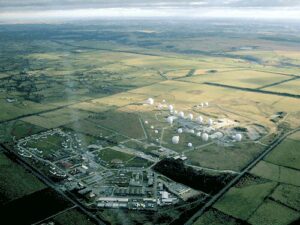 of operations, and when evil people are allowed to operate in secrecy, the only logical outcome is disaster.
of operations, and when evil people are allowed to operate in secrecy, the only logical outcome is disaster.
RAF Menwith Hill is one of three main sites operated by the United States across the globe. It operates as a major satellite monitoring station and intelligence gathering location. The other two sites are located in America and Australia, having similar roles and working together with RAF Menwith Hill to develop knowledge around American, British, and Australian interests. The Australian site is known as the Joint Defence Facility Pine Gap. I wonder if operations at the other sites are as secret as they are at RAF Menwith Hill.
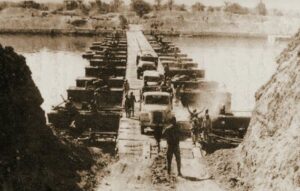
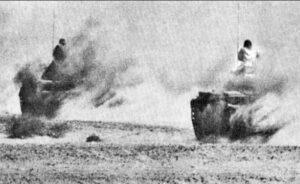 There has not been a time in my memory that was void of Middle East tensions, and perhaps there never been such a time since Biblical times. There have been many attempts and many negotiations trying to achieve Middle East peace, but none have ever really been successful. There have, however, been many wars, conflicts, and attacks on the countries of the Middle East, especially on Israel.
There has not been a time in my memory that was void of Middle East tensions, and perhaps there never been such a time since Biblical times. There have been many attempts and many negotiations trying to achieve Middle East peace, but none have ever really been successful. There have, however, been many wars, conflicts, and attacks on the countries of the Middle East, especially on Israel.
On October 6, 1973, in a surprise attack by Egyptian and Syrian forces on Israel, again threw the Middle East into turmoil. This particular attack threatened to bring the United States and the Soviet Union into direct conflict for the first time since the Cuban Missile Crisis in 1962. The United States and the Soviet Union had a tense relationship already, and although actual combat did not break out between the two nations, the events surrounding what became known as the Yom Kippur War seriously damaged United States-Soviet relations and all but destroyed then President Richard Nixon’s much publicized policy of détente (an end to hostilities).
Going into the war, Egypt and Syria, who were armed with the latest in Soviet weaponry, appeared to have the upper hand, and it looked like the two-front attack might bring victory to Egypt and Syria, who were looking to avenge themselves after their humiliating defeat in the Six-Day War of 1967. Nevertheless, Israeli counterattacks, aided by massive amounts of US military assistance, as well as disorganization among the Syrian and Egyptian forces turned the tide. The Israeli troops drove the Syrian troops back, and Syrians and seized the strategically important Golan Heights. The Israeli forces were even harder on the Egyptian army, forcing them to retreat back through the Sinai Desert, thousands of their troops were surrounded and cut off by the Israeli army.
As concerns deepened over the possibility of US-Soviet involvement in the conflict, Secretary of State Henry Kissinger, together with his Soviet counterparts, eventually arranged a shaky cease-fire. The Israeli troops had no intention of ending their siege of the Egyptian troops, who by this time were low on food and medicine, the Soviets threatened to take unilateral action to rescue them. This brought the situation close to the boiling point, and with tempers flared both in Washington and Moscow, the US military forces went to a Stage 3 alert. In case you didn’t know it, Stage 1 is war, so the volatile situation was about to explode. The threat of war with the US caused the Soviets to back down on their threat, but the damage to relations between the two nations was serious and would not be resolved for a long time, if ever. I’m still not sure that relationship is on anything but shaky ground.
Nevertheless, Kissinger worked feverishly to bring about a peace settlement between Israel, Syria, and Egypt. In what later became known as “shuttle diplomacy,” the secretary of state flew from nation to nation 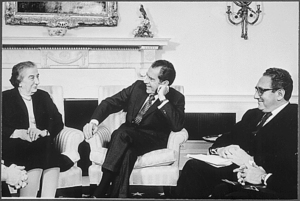
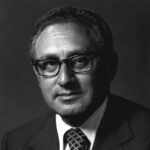 hammering out the details of the peace accord. Finally, a little more comfortable with things, Israel began to withdraw its troops from some of their positions in both the Sinai and Syrian territory. For their part, Egypt promised to forego the use of force in its dealings with Israel. Syria only grudgingly accepted the peace plan, but they remained adamantly opposed to the existence of the Israeli state…a feeling that still exists among many Middle Eastern nations to this day.
hammering out the details of the peace accord. Finally, a little more comfortable with things, Israel began to withdraw its troops from some of their positions in both the Sinai and Syrian territory. For their part, Egypt promised to forego the use of force in its dealings with Israel. Syria only grudgingly accepted the peace plan, but they remained adamantly opposed to the existence of the Israeli state…a feeling that still exists among many Middle Eastern nations to this day.
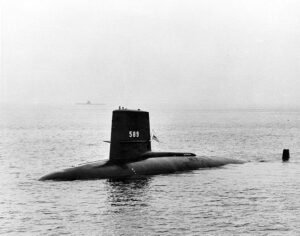
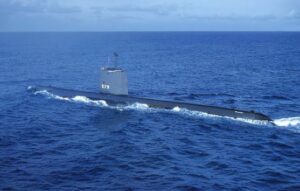 USS Scorpion (SSN-589) was a Skipjack-class nuclear-powered submarine that served in the United States Navy, and the sixth vessel, and second submarine, of the US Navy to carry that name. It was also the fourth nuclear powered submarine to mysteriously go missing in 1968. Scorpion was lost with all its crew, on May 22, 1968. Scorpion is one of two nuclear submarines the US Navy has lost, the other being USS Thresher. The other nuclear-powered submarines to go missing in 1968 at the height of the Cold War were Israeli submarine INS Dakar, the French submarine Minerve, and the Soviet submarine K-129. At the time Scorpion went missing when she was sent to surveil the Soviet submarine K-129, which had apparently already gone missing earlier in the year. The wreckage of USS Scorpion is still at the bottom of the North Atlantic Ocean…with all its armaments and nuclear engine.
USS Scorpion (SSN-589) was a Skipjack-class nuclear-powered submarine that served in the United States Navy, and the sixth vessel, and second submarine, of the US Navy to carry that name. It was also the fourth nuclear powered submarine to mysteriously go missing in 1968. Scorpion was lost with all its crew, on May 22, 1968. Scorpion is one of two nuclear submarines the US Navy has lost, the other being USS Thresher. The other nuclear-powered submarines to go missing in 1968 at the height of the Cold War were Israeli submarine INS Dakar, the French submarine Minerve, and the Soviet submarine K-129. At the time Scorpion went missing when she was sent to surveil the Soviet submarine K-129, which had apparently already gone missing earlier in the year. The wreckage of USS Scorpion is still at the bottom of the North Atlantic Ocean…with all its armaments and nuclear engine.
The Cold War is a term commonly used to refer to a period of geopolitical tension between the United States and the Soviet Union and their respective allies, the Western Bloc and the Eastern Bloc. The first phase of the Cold War began shortly after the end of World War II in 1945. The United States and its allies created the NATO military alliance in 1949 in the apprehension of a Soviet attack and termed their global policy against Soviet influence containment.
Following World War II, tensions were running high between world powers. It is thought that if there was ever a time when a real possibility of a nuclear attack existed, it was during the Cold War. This meant that countries were frantically looking for any advantage they could use to take over their competitors. One way to watch the other countries was to Surveil beneath the waves where they could be more hidden. This surveillance included the use of submarine crews. That, of course, explains the reason for mysterious disappearance of four subs from four different countries virtually at the same time.
The first disappearance was the INS Dakar from Israel, which went down just east of Crete on January 25, 1968. Dakar’s wreckage was found in 1991, but no official cause for the sinking was determined. Next, The French sub Minerve disappeared about an hour outside of Toulon on January 27, 1968. That wreckage was found in 2019, and it showed the hull had separated into three sections. When the French government made the decision to leave the wreck, any chance of answers was eliminated. The Soviet K-129 disappeared earlier in the year, so maybe USS Scorpion was looking for it. Nevertheless, on May 22, 1968, the disappearance conspiracy of 1968 was brought to a close, when USS Scorpion. The submarine would not be fount until October of 1968. The Navy looked into the disaster, but in the end the official court of inquiry said the cause of the loss could not be determined with certainty. Still, there are several theories on what might have happened. One centered around a malfunction of a torpedo. Others suspected poor maintenance may have been the culprit, citing the rushed overhaul.
That was the last report anyone heard about the submarine. After decades of research and investigation, the US Navy has never changed its report that a catastrophic event caused the sinking. Nevertheless, there are those who believe the Scorpion was taken out by the Soviets in retaliation for perceived attack on the K-129 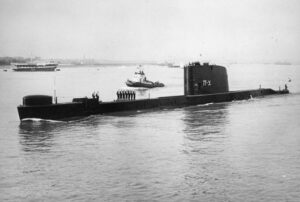
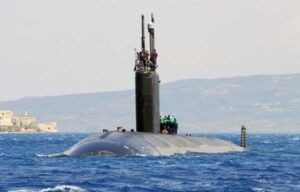 submarine earlier in the year. Neither country will admit or deny any direct action relating to the submarine sabotage, but something happened during the first half of 1968. Four nuclear-powered submarines, from four different countries just don’t start sinking for no reason, and yet, no reason was ever determined. They just sunk.
submarine earlier in the year. Neither country will admit or deny any direct action relating to the submarine sabotage, but something happened during the first half of 1968. Four nuclear-powered submarines, from four different countries just don’t start sinking for no reason, and yet, no reason was ever determined. They just sunk.
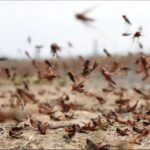
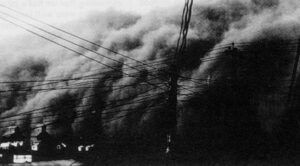 No matter where you live, I’m sure you have had encounters with grasshoppers. They are an unfortunate fact of life in this world. Some years are worse than others, and some areas are worse than others too. There are a few facts about grasshoppers that I didn’t know about, and some I did. Unfortunately, there are no chemical pesticides to control grasshoppers, but since cool, moist conditions slow them down and encourage the growth of fungi (which cause disease in grasshoppers), keeping plant beds moist and well irrigated may help ward them off. To protect small areas, try using a sticky paper or screening. Most of us find that in dry hot years, the grasshoppers make us as miserable as the heat. Never was that more evident than on July 26, 1931, when a swarm of grasshoppers descended on crops throughout America’s heartland, devastating millions of acres. Iowa, Nebraska, and South Dakota were already suffering from a bad drought that brought severe damage to the crops in the region. The grasshoppers really just finished them off.
No matter where you live, I’m sure you have had encounters with grasshoppers. They are an unfortunate fact of life in this world. Some years are worse than others, and some areas are worse than others too. There are a few facts about grasshoppers that I didn’t know about, and some I did. Unfortunately, there are no chemical pesticides to control grasshoppers, but since cool, moist conditions slow them down and encourage the growth of fungi (which cause disease in grasshoppers), keeping plant beds moist and well irrigated may help ward them off. To protect small areas, try using a sticky paper or screening. Most of us find that in dry hot years, the grasshoppers make us as miserable as the heat. Never was that more evident than on July 26, 1931, when a swarm of grasshoppers descended on crops throughout America’s heartland, devastating millions of acres. Iowa, Nebraska, and South Dakota were already suffering from a bad drought that brought severe damage to the crops in the region. The grasshoppers really just finished them off.
Anyone who has grown a garden, crops, trees, and even grass, have struggled to prevent insects from eating their crops or plants. Locusts and grasshoppers, which are insect cousins, are among the most feared pests. If the conditions are right, their populations can suddenly explode, and while just their presence is enough to make most people’s skin crawl, the speed with which they are able to eat through a field of crops is impossible to comprehend, unless they have witnessed it for themselves. A plague of these insects occurs when drought conditions cause their populations to suddenly explode. The egg pods don’t do well in wet conditions, so when the soil is very dry, swarms can develop. “They explode from beneath your feet. There’s sort of a rolling wave that forms out in front of you. They hit up against your body and cling against your clothes. It’s almost like being immersed in a gigantic living being,” says Professor Jeff Lockwood of Wyoming.
The swarm in July of 1931 was so thick that it actually blocked out the sun. The grasshoppers had to be scooped up with a shovel. They ate the cornstalks down to the ground, leaving just stubs, and they ate 
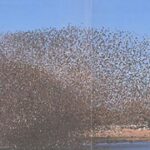 everything in the fields, down to the bare ground. Thankfully, the United States hasn’t seen swarms since the early 1930s. Many other areas of the world are not so fortunate. North Africa and parts of the Middle East continue to experience problems with insect swarms. In fact, the swarms in some of those areas have involved as many as a billion bugs. I don’t know about you, but now my skin is really crawling. Eeeeeeewwwwwwww!!
everything in the fields, down to the bare ground. Thankfully, the United States hasn’t seen swarms since the early 1930s. Many other areas of the world are not so fortunate. North Africa and parts of the Middle East continue to experience problems with insect swarms. In fact, the swarms in some of those areas have involved as many as a billion bugs. I don’t know about you, but now my skin is really crawling. Eeeeeeewwwwwwww!!
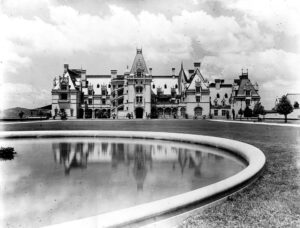
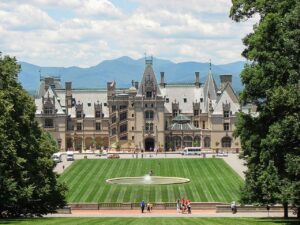 During what became known as the Gilded Age in United States history, extending roughly from 1870 to 1900, the economy grew so rapidly that the wages of Americans, especially in the Northern and Western United States actually surpassed the wages in Europe, especially for skilled workers. Still, increased industrialization demanded an increased unskilled labor force too, so the there was an influx of millions of European immigrants looking for a better life, to fill the need for workers. Basically, the Gilded years were years of overwhelming extravagance.
During what became known as the Gilded Age in United States history, extending roughly from 1870 to 1900, the economy grew so rapidly that the wages of Americans, especially in the Northern and Western United States actually surpassed the wages in Europe, especially for skilled workers. Still, increased industrialization demanded an increased unskilled labor force too, so the there was an influx of millions of European immigrants looking for a better life, to fill the need for workers. Basically, the Gilded years were years of overwhelming extravagance.
While many of the estates of the Gilded Age were in the Eastern United States, not all the great estates were in places like New York City or Newport, Rhode Island. Some of the very wealthy apparently didn’t really like the Northern winter climates, so they chose to build their estates in areas of the South. One of the greatest of these southern estates was the Biltmore Estate near Asheville, North Carolina, The estate was built by George Washington Vanderbilt II between 1889 and 1896, and it is enormous!! The estate covers nearly 11 miles. Of course, the real difference between what we would consider a mansion, and the Gilded Era estates is the fact that the grounds are as extravagant as the homes. The main house of the Biltmore Estate has nearly 200,000 square feet!! Most of us consider a nice sized house to be 2,000 to 3,000 square feet, so 200,000 square feet, for me at least, is beyond what I can even imagine in a house. The construction was a huge undertaking, that literally took building an entire working village near the site to house the workers, manufacturers, and supplies. A three-mile railroad spur was even built just to transport building supplies to the construction site. More than 1,000 workers were hired to build the huge house.
The Biltmore remains in the ownership of the Vanderbilt family, with at least one member of the family living there until 1956, at which point it was operated as a historic museum. It is the largest privately owned home in the United States. To help with the high cost of modern maintenance and expenses, the house and grounds are 
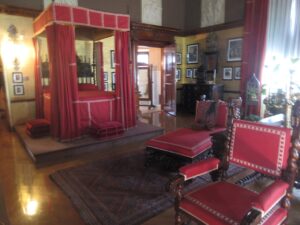 open to the public, for a price, and a number of ticketed events are held on the site throughout the year. At the request of the City of Asheville, which hoped to revitalize the area with tourism, and in an attempt to bolster the estate’s finances during the Great Depression, Cornelia and her husband opened Biltmore to the public in March 1930 at the request of the City of Asheville.
open to the public, for a price, and a number of ticketed events are held on the site throughout the year. At the request of the City of Asheville, which hoped to revitalize the area with tourism, and in an attempt to bolster the estate’s finances during the Great Depression, Cornelia and her husband opened Biltmore to the public in March 1930 at the request of the City of Asheville.
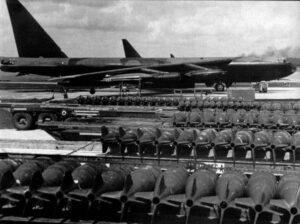 Why would the United States secretly bomb a neutral nation in the middle of a war with an enemy nation? That is the question I have been asking myself concerning the Menu Bombings…the bombing of neutral Cambodia during the Vietnam war. It was thought that bombing supply routes in Cambodia would weaken the enemies of the United States. I’m not sure that worked exactly. It did cut off the supply line, but innocent people were caught in the crossfire. Nevertheless, the decision was made to bomb Cambodia, and also to keep it a secret from the American public, who would most likely feel about it the same way, I do. Intentionally bombing innocent people just rubs most of us the wrong way.
Why would the United States secretly bomb a neutral nation in the middle of a war with an enemy nation? That is the question I have been asking myself concerning the Menu Bombings…the bombing of neutral Cambodia during the Vietnam war. It was thought that bombing supply routes in Cambodia would weaken the enemies of the United States. I’m not sure that worked exactly. It did cut off the supply line, but innocent people were caught in the crossfire. Nevertheless, the decision was made to bomb Cambodia, and also to keep it a secret from the American public, who would most likely feel about it the same way, I do. Intentionally bombing innocent people just rubs most of us the wrong way.
On March 15, 1969, President Richard Nixon approved the plan to bomb Cambodia. The actual missions began 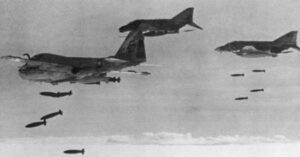 on March 18, 1969, when US B-52 bombers are diverted from their targets in South Vietnam to attack suspected communist base camps and supply areas in Cambodia for the first time in the war. This mission, originally intended to be called Operation Breakfast, and subsequent B-52 strikes inside Cambodia became known as the “Menu” bombings. The strikes included a total of 3,630 flights over Cambodia dropping 110,000 tons of bombs during a 14-month period through April 1970. This bombing of Cambodia and all follow up “Menu” operations were kept secret from the American public and the US Congress because Cambodia was considered a neutral nation. The missions had to be kept secret to avoid a public outcry…so, an intricate reporting system was established at the Pentagon to prevent disclosure of the bombing.
on March 18, 1969, when US B-52 bombers are diverted from their targets in South Vietnam to attack suspected communist base camps and supply areas in Cambodia for the first time in the war. This mission, originally intended to be called Operation Breakfast, and subsequent B-52 strikes inside Cambodia became known as the “Menu” bombings. The strikes included a total of 3,630 flights over Cambodia dropping 110,000 tons of bombs during a 14-month period through April 1970. This bombing of Cambodia and all follow up “Menu” operations were kept secret from the American public and the US Congress because Cambodia was considered a neutral nation. The missions had to be kept secret to avoid a public outcry…so, an intricate reporting system was established at the Pentagon to prevent disclosure of the bombing.
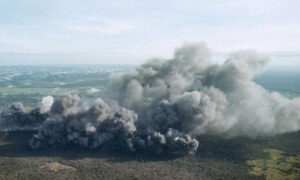
Somehow, the story was leaked by the New York Times in May of 1969, but there was little adverse public reaction. Now I find that incredible. The people were so “asleep” that they hardly noticed the bombing of a neutral country. It makes me wonder just how long the people have been asleep. How could people simply take no notice of such a huge violation of the rules of war. I’m sure there are things I don’t know about this war…lots of things, in fact, but I don’t think it is proper for our government to hide things for the people…especially such a big set of bombing missions on a neutral country. The people of this nation need to open our eyes and watch what our government is doing…before it’s too late.
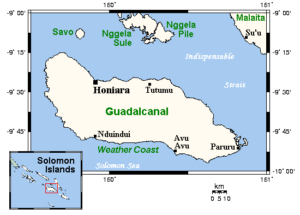 Amazingly, the islands of the world have held an importance during wartime, that most of us would never have dreamed. These seemingly insignificant places proved to be great staging places time and again, and so became places that were fought over viciously. The Solomon Islands were among those places fought over during World War II…most specifically Guadalcanal. The island of Guadalcanal is the largest of the Solomons Islands, which is in the South Pacific Ocean, located northeast of Australia. The Solomon Islands are a group of 992 islands and atolls, 347 of which are inhabited. The Solomons have 87 Indigenous languages. They were first discovered in 1568 by Spanish navigator Alvaro de Mendana de Neyra (1541-95). By 1893, the British had annexed Guadalcanal, along with the other central and southern Solomons, which made sense, since they also owned Australia. In 1885, the Germans took control of the northern Solomons, but transferred these islands, except for Bougainville and Buka (which eventually went to the Australians) to the British in 1900. So, the Solomon Islands have been transferred around some over the centuries, as most countries have been, a time or two anyway.
Amazingly, the islands of the world have held an importance during wartime, that most of us would never have dreamed. These seemingly insignificant places proved to be great staging places time and again, and so became places that were fought over viciously. The Solomon Islands were among those places fought over during World War II…most specifically Guadalcanal. The island of Guadalcanal is the largest of the Solomons Islands, which is in the South Pacific Ocean, located northeast of Australia. The Solomon Islands are a group of 992 islands and atolls, 347 of which are inhabited. The Solomons have 87 Indigenous languages. They were first discovered in 1568 by Spanish navigator Alvaro de Mendana de Neyra (1541-95). By 1893, the British had annexed Guadalcanal, along with the other central and southern Solomons, which made sense, since they also owned Australia. In 1885, the Germans took control of the northern Solomons, but transferred these islands, except for Bougainville and Buka (which eventually went to the Australians) to the British in 1900. So, the Solomon Islands have been transferred around some over the centuries, as most countries have been, a time or two anyway.
During World War II, Guadalcanal became a hard-fought-over island, with the Japanese in control in early 1943. Then, on February 8, 1943, Japanese troops evacuate Guadalcanal, leaving the island in Allied possession after a prolonged campaign. When Japan lost Guadalcanal, it paved the way for other Allied wins in the Solomon Islands.
The Japanese had invaded the Solomon Islands in 1942 during World War II and immediately began building a strategic airfield on Guadalcanal. On August 7, 1942, US Marines landed on the island, signaling the Allies’ first major offensive against Japanese-held positions in the Pacific. The Japanese response to the US Marines “boots on the ground” was to quickly launch sea and air attacks. The battles that followed were bloody and made even more miserable in the debilitating tropical heat. Nevertheless, the Marines fought hard with Japanese troops on land, and in the waters surrounding Guadalcanal, the US Navy fought six major engagements with the Japanese between August 24 and November 30. In mid-November 1942, the five Sullivan brothers from Waterloo, Iowa, died together when the Japanese sank their ship, the USS Juneau. These days they try not to put brother together in battle, but the Sullivan brothers had requested it, and so it was granted.
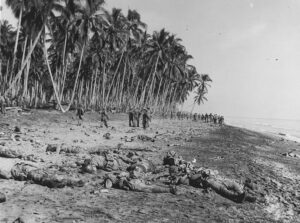
Both the United States and the Japanese suffered heavy losses of men, warships, and planes in the battle for Guadalcanal. It is estimated 1,600 US troops were killed and over 4,000 were wounded. Several thousand more died from disease. The Japanese lost 24,000 soldiers. Finally, on December 31, 1942, Emperor Hirohito told his troops they could withdraw from the area. About five weeks later, the Americans secured Guadalcanal. American authorities declared Guadalcanal secure on February 9, 1943. After the war, American and Japanese groups have repeatedly visited Guadalcanal to search for remains of missing soldiers. Some 7,000 Japanese remain missing on the island, and islanders still bring the Japanese groups bones that the islanders say are those of unearthed Japanese soldiers.
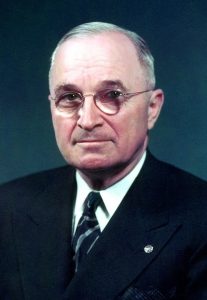 Some presidents are destined to greatness, and some are thrown into it. Some qualify in both categories. President Harry S Truman was born in Lamar, Missouri, on May 8, 1884. He was the oldest child of John Anderson Truman and Martha Ellen Young Truman. As is often tradition in families, he was named for his maternal uncle, Harrison “Harry” Young. His middle initial, “S” was to honor his grandfathers, Anderson Shipp Truman and Solomon Young. Truman’s brother, John Vivian, was born soon after he was, followed by sister Mary Jane.
Some presidents are destined to greatness, and some are thrown into it. Some qualify in both categories. President Harry S Truman was born in Lamar, Missouri, on May 8, 1884. He was the oldest child of John Anderson Truman and Martha Ellen Young Truman. As is often tradition in families, he was named for his maternal uncle, Harrison “Harry” Young. His middle initial, “S” was to honor his grandfathers, Anderson Shipp Truman and Solomon Young. Truman’s brother, John Vivian, was born soon after he was, followed by sister Mary Jane.
President Truman was the 33rd President of the United States, becoming president after the death of President Franklin D Roosevelt. He was a lifetime Democrat, although he might not recognize the party today, and as we have seen, there are good and bad politicians in both parties. Following the death of Roosevelt, who was rather anti-Israel, Truman implemented the Marshall Plan to rebuild the economy of Western Europe and established both the Truman Doctrine and NATO to contain the expansion of communism. He went on to propose numerous liberal domestic reforms, but few were enacted by the Conservative Coalition that dominated the Congress at 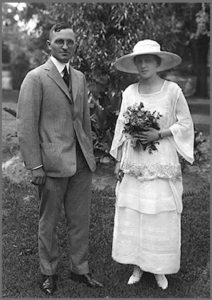 that time. While some of his policies, were not good for America or the world, he was known for his support of Israel. On May 14, 1948, Prime Minister David Ben-Gurion read the proclamation of nationhood. Striking the speaker’s table for emphasis, he announced, “The name of our state shall be Israel.” It was a noble effort, but the new state would need to be recognized to carry much weight.
that time. While some of his policies, were not good for America or the world, he was known for his support of Israel. On May 14, 1948, Prime Minister David Ben-Gurion read the proclamation of nationhood. Striking the speaker’s table for emphasis, he announced, “The name of our state shall be Israel.” It was a noble effort, but the new state would need to be recognized to carry much weight.
Shortly before making his speech, President Truman made some last-minute changes, which are still visible on the speech. The American statement recognized the new State of Israel. Israel’s American recognition came shortly after midnight in Palestine, just a few minutes after the new nation was proclaimed. There were a number of nations who did not want Israel to be a nation again, but President Truman took matters into his own hands, and it became a reality. For his help, President Truman was gifted a Torah from Dr Chaim Weizmann, who was the first president of the new state of Israel, during Weizmann’s visit to the White House on May 25th, 1948. I suppose some people might disagree, but for me, this was the crowning moment of Truman’s presidency.
After his wartime service, Truman returned to Independence, where he married Bess Wallace on June 28, 1919. 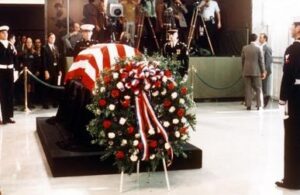 The couple had one child, Mary Margaret Truman. On December 5, 1972, Truman was admitted to Kansas City’s Research Hospital and Medical Center with pneumonia. He developed multiple organ failure, fell into a coma, and died at 7:50am on December 26, 1972, in Independence, Missouri at the age of 88. Bess Truman opted for a simple private service at the library rather than a state funeral in Washington. A week after the funeral, foreign dignitaries and Washington officials attended a memorial service at Washington National Cathedral. Bess died in 1982 and is buried next to Harry at the Harry S Truman Library and Museum in Independence, Missouri.
The couple had one child, Mary Margaret Truman. On December 5, 1972, Truman was admitted to Kansas City’s Research Hospital and Medical Center with pneumonia. He developed multiple organ failure, fell into a coma, and died at 7:50am on December 26, 1972, in Independence, Missouri at the age of 88. Bess Truman opted for a simple private service at the library rather than a state funeral in Washington. A week after the funeral, foreign dignitaries and Washington officials attended a memorial service at Washington National Cathedral. Bess died in 1982 and is buried next to Harry at the Harry S Truman Library and Museum in Independence, Missouri.
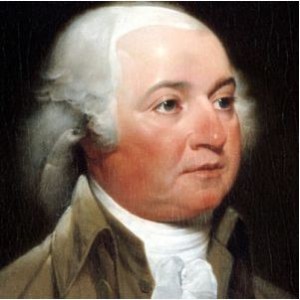 His Elective Majesty…sounds almost laughable, but it was almost the proper way to address the President of the United States, a fact that some presidents would probably have liked very much. Some presidents have tried to “rule” as a king would have, so they figure, why not buy in whole heartedly. One such president, who in fact made the original suggestion of title, was none other than, at the time, Vice President John Adams. The idea came from the fact that other heads of state are known by honorifics such as “His Excellency” and such, but United States presidents are only ever Mr President…or “sir” in a pinch. I’m sure that John Adams already had his sights set on becoming president at some point, and the second president of the United States seemed as good a time to run as any…or maybe he liked his own idea very much.
His Elective Majesty…sounds almost laughable, but it was almost the proper way to address the President of the United States, a fact that some presidents would probably have liked very much. Some presidents have tried to “rule” as a king would have, so they figure, why not buy in whole heartedly. One such president, who in fact made the original suggestion of title, was none other than, at the time, Vice President John Adams. The idea came from the fact that other heads of state are known by honorifics such as “His Excellency” and such, but United States presidents are only ever Mr President…or “sir” in a pinch. I’m sure that John Adams already had his sights set on becoming president at some point, and the second president of the United States seemed as good a time to run as any…or maybe he liked his own idea very much.
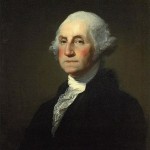
Apparently, thinking that the office of the President of the United States needed a title with more grandeur, Adams suggested that a president should be referred to as either “His Elective Majesty,” “His Mightiness,” or the slightly excessive “His Highness, the President of the United States of America and the Protector of their Liberties.” Just imagine any of those ideas. Every one of them make me giggle. Just take a moment to say (out loud) those titles in connection with the president…any president. With some presidents, any one of these titles is hilarious, and I’ll let you to decide to whom that statement applies, because these days we all have very specific opinions on the matter.
In those days, Washington was very aware of public fear about their newly won democracy slipping back into a 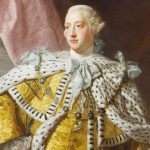 monarchy. They didn’t want this new nation to be too similar to England. They didn’t want this newly free nation to become once again ruled by a different kind of monarchy. So, they refused to allow the president to be titled as anything other than “The President of the United States.” They were right, of course, because the United States is not a “spin-off” of England…like England 2.0. The United States is a very unique nation…unlike any other, before her or after her. This nation was founded by people who refused to be told what to believe anymore. That is why they left England, where they were forced to live under a “state religion.” The nation was founded as “one nation, under God.” We would not have a king, because Jesus was our King of kings. We couldn’t give that title to a mere man.
monarchy. They didn’t want this new nation to be too similar to England. They didn’t want this newly free nation to become once again ruled by a different kind of monarchy. So, they refused to allow the president to be titled as anything other than “The President of the United States.” They were right, of course, because the United States is not a “spin-off” of England…like England 2.0. The United States is a very unique nation…unlike any other, before her or after her. This nation was founded by people who refused to be told what to believe anymore. That is why they left England, where they were forced to live under a “state religion.” The nation was founded as “one nation, under God.” We would not have a king, because Jesus was our King of kings. We couldn’t give that title to a mere man.

